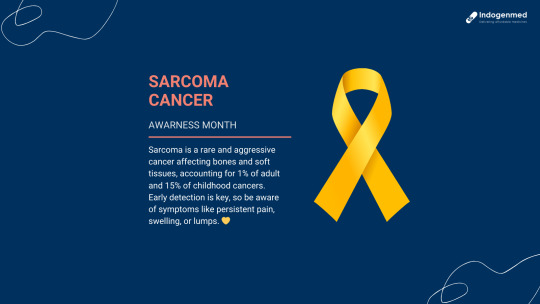#CancerResearch
Explore tagged Tumblr posts
Text
youtube
#youtube#oncology#cancer#cancerawareness#cancerresearch#immunotherapy#precision medicine#tumor microenvironment#cancer research#radonc
1 note
·
View note
Text

Sarcoma, often called the "forgotten cancer," affects the body's connective tissues like bones and soft tissues. Despite being rare, it's important to spread awareness and support those affected. Soft tissue sarcomas, the most common type, can appear in muscles, fat, blood vessels, and more. Early detection is crucial, so watch for painless lumps that may grow and become painful. Together, let's bring attention to this often overlooked cancer and support those on their journey.
2 notes
·
View notes
Text
Some dollies for Cancer Research - check them out at Jula Crafts in Consett and support the cause! Carnival cuties theme! ⭐💜

#handmadedolls#handmade plush#handsewn#homemade#cancerresearch#charity#donations#arts and crafts#character doll#animal plush#queer artist#art#artwork
3 notes
·
View notes
Text

Things you should know about Childhood Cancer 🎗️:
* In 2023, it is estimated that 9,910 children (birth to 14 years) and 5,280 adolescents (aged 15-19 years) will be diagnosed with cancer in the United States
* Childhood cancer is not one disease – there are more than 12 major types of pediatric cancers and over 100 subtypes.
* Cancer is the number one cause of death by disease among children. Worldwide, 100,000 children lose their lives every year to cancer.
.
.
.
#WETakeOnCancer #WTOC #CancerResearch #OncologyCare #CancerCARE #childhoodcancer #ChildhoodCancerAwareness #AML #Leukemia #Lymphoma
#wetakeoncancer#cancerresearch#wtoc#cancercare#childhoodcancerawareness#leukemia#lymphoma#oncologycancer#oncologyresearch
4 notes
·
View notes
Text
Fact: Extra estrogen produced by fatty tissue in overweight people raises the risk of uterine cancer. The body mass index (BMI), which measures a person's weight in relation to height, rises as BMI does. Obesity is associated with about 70% of uterine cancer cases.
#uterinecancer#uterinecancerawareness#uterinecancersurvivor#uterinecancersucks#uterinecancerwarrior#cancerfighter#gynecologiconcology#cancerresearch#lymphomaawareness#oncology#prostatecancerawareness#lungcancerawareness#oncologista#breastcancerfree#irregularperiods#ovarian#hormonetherapy#colorectal#familyhistory#universitycancercenter
4 notes
·
View notes
Text
Shaving my head for cancer research!
I lost my grandfather to cancer, my grandmother beat cancer, many other members of my mum's side of the family have died of cancer, and 1 in 2 people will have cancer at some point, because of this I've decided after not cutting my hair since 2019 that in August I am going to shave my head and donate my hair to be made into a wig for children with cancer. This is because cancer research is important to me as many people I love, and many people I admire have had cancer, Colby Brock, Andrea Swift, My Grandad, My Grandmother, and a friend of a friend.
2 notes
·
View notes
Text
🔬🧬 Inside the Genome: GIST Mutation Detection Kit Market Trends 🧬🔬
The GIST Mutation Detection Kit Market is on the rise — driven by rapid advancements in medical diagnostics, cancer research, and the growing demand for targeted therapies. Whether in labs, hospitals, or biotech startups, these kits are shaping how we understand and treat gastrointestinal stromal tumors (GISTs).
🧪 What’s Fueling the Market Boom?
Increased awareness of PDGFRA & C-KIT mutations 🧬
Rising demand for personalized medicine in oncology
Accelerated R&D in molecular diagnostics
Global focus on early cancer detection
🌍 Global Scope, Local Impact: 📍 Regions to Watch:
North America (leading in clinical adoption)
Europe (expanding R&D investment)
Asia-Pacific (rapid healthcare infrastructure growth)
RoW (untapped potential & emerging access)
⚗️ Segment Snapshot: Types:
PDGFRA & C-KIT Detection Kits Applications:
Medical Diagnostics 🏥
Scientific Research 🔬
Others (academic, pharma, etc.)
📊 Market Outlook Includes: ✔️ Growth forecasts through 2033 ✔️ Revenue breakdown by segment & region ✔️ Strategic moves by key players ✔️ Distribution & pricing patterns ✔️ Competitive landscape analysis
📌 Curious about the details? 👉 Click here for the full report + sample
#BiotechTumblr#MolecularDiagnostics#PrecisionMedicine#GISTDetection#Genomics#CancerResearch#HealthcareTrends#BioInnovation#GISTMutation#TumorMarkers#MedTech#OncologyInsights#ClinicalDiagnostics
0 notes
Text
🧠 AI Revolutionizing Glioblastoma Research!
Don't forget to like and share this video Visit our page : computationalbiologists.com
Nominations page : https://computationalbiologists.com/award-nomination/?ecategory=Awards&rcategory=Awardee
Follow us on:
Instagram : https://www.instagram.com/_awardresearcher_02/ Blogger : https://www.blogger.com/blog/posts/859633461166750462 Twitter : https://x.com/AwardResearcher Facebook : https://www.facebook.com/profile.php?id=61573772493321 Tumblr : https://www.tumblr.com/computationalbiologistsawards?source=share Pintrest : https://in.pinterest.com/awardresearcher/_profile/ Youtube : https://www.youtube.com/@ResearcherAward
#Glioblastoma#BrainCancer#AIinHealthcare#CancerResearch#MedicalAI#NeuroOncology#ArtificialIntelligence
0 notes
Link
🧬 Epigenetics meets innovation! HDAC inhibitors are revolutionizing cancer & neuro treatment pathways.💊📊
0 notes
Text

#CancerAwareness#FightCancer#CancerSupport#CancerCare#CancerPrevention#CancerResearch#CancerTreatment
0 notes
Text
Diet and Cancer Risk: What You Need to Know
Can your diet really affect your risk of developing cancer? The answer may surprise you. Research shows that the foods you eat daily can greatly impact your cancer risk. So, what dietary factors can affect cancer risk, and how can you make simple changes to lower your risk?
Key Takeaways Eating a diet rich in plant-based foods like vegetables, fruits, whole grains, and beans can help lower cancer risk. Antioxidants and beneficial compounds in these plant-based foods can protect cells from damage and inflammation, which are linked to cancer. Limiting processed and red meats, sugary foods, and alcohol can also play a role in cancer prevention. Making gradual, sustainable changes to your diet by focusing on more nutrient-dense, plant-based options is an important step in cancer risk reduction. Maintaining a healthy weight through a balanced, plant-based diet and regular physical activity can further contribute to lower cancer risk.
#cancer#cancerrisk#breastcancer#cancerprevention#cancerresearch#cancerdiagnosis#cancerrisks#prostatecancer
0 notes
Text
youtube
#EGR3#CancerResearch#TumorProgression#SchwannCells#CellDifferentiation#CancerInhibition#TumorSuppression#GlialCells#CellTherapy#Metastasis#PhenotypicShift#CancerBiology#TumorGrowth#CellReprogramming#NeuralRegeneration#CancerTreatment#DifferentiationTherapy#TherapeuticTargets#TumorBiology#OncologyResearch#Youtube
2 notes
·
View notes
Text
Live Cell Monitoring Market Innovation Accelerates With AI Integration and Automated Imaging Systems
The Live Cell Monitoring Market is gaining substantial momentum as biotechnology and pharmaceutical industries increasingly demand real-time insights into cellular functions. Live cell monitoring refers to the non-invasive observation of living cells over time using advanced imaging systems, assays, and analytical software. This process is essential in understanding cellular behavior, drug interactions, cancer biology, and stem cell research.

In recent years, the need for precision medicine, regenerative therapies, and advanced cancer treatments has driven a significant rise in the demand for live cell monitoring technologies. The market is expanding rapidly due to growing investments in research and development (R&D), technological innovations, and the rising prevalence of chronic diseases globally.
Key Drivers of Market Growth
Several factors are propelling the live cell monitoring market forward. First, the increased focus on cell-based research for drug discovery and toxicity testing has led to greater adoption of live cell imaging systems. These technologies help researchers understand the dynamic biological processes that occur within cells, which is crucial for developing targeted therapies.
Second, technological advancements in imaging platforms, such as high-content screening, fluorescence microscopy, and time-lapse imaging, have significantly improved the accuracy and efficiency of live cell monitoring. These systems now offer enhanced resolution, faster imaging speeds, and automated analysis tools that make it easier to observe cell proliferation, apoptosis, migration, and morphological changes in real-time.
Third, the increasing application of live cell monitoring in personalized medicine is also fueling market expansion. By closely observing how individual patient cells react to various drugs, clinicians can tailor treatments more effectively, enhancing patient outcomes and minimizing adverse effects.
Market Segmentation
The live cell monitoring market can be segmented based on product type, application, end-user, and region.
By product type, the market includes:
Instruments (microscopes, cell analyzers, and incubators)
Consumables (media, reagents, assay kits)
Software solutions
By application, it is categorized into:
Drug discovery and development
Stem cell research
Cancer research
Immunology
Others
By end-user, the market caters to:
Pharmaceutical and biotechnology companies
Academic and research institutes
Contract research organizations (CROs)
Among these, pharmaceutical and biotechnology companies represent the largest share due to their extensive involvement in drug screening and cell-based assays.
Regional Analysis
Geographically, North America dominates the live cell monitoring market, thanks to its robust research infrastructure, presence of key industry players, and high R&D expenditure. The United States, in particular, leads the charge due to its advanced healthcare system and substantial investments in biomedical research.
Europe follows closely, with countries such as Germany, the UK, and France at the forefront of cellular biology research. Meanwhile, the Asia-Pacific region is expected to witness the fastest growth during the forecast period, driven by rising healthcare investments, increasing biotech startups, and growing interest in personalized medicine in countries like China, India, and Japan.
Competitive Landscape
The live cell monitoring market is competitive, with several key players striving to innovate and expand their portfolios. Notable companies include:
Thermo Fisher Scientific
Sartorius AG
PerkinElmer
Olympus Corporation
Bio-Rad Laboratories
Agilent Technologies
These companies focus on developing user-friendly, high-resolution imaging systems, and integrated software platforms that enable researchers to analyze data more effectively.
Strategic collaborations, mergers, and acquisitions are also prevalent, helping companies strengthen their market positions and expand geographically. Furthermore, startups focusing on artificial intelligence (AI) integration into live cell imaging platforms are entering the space, offering smart solutions to enhance analysis accuracy and reduce human error.
Challenges and Opportunities
Despite the market's promising growth, challenges remain. High equipment costs, complex system integration, and the need for skilled professionals can limit adoption, particularly in developing regions. Additionally, the handling of large datasets generated from live cell imaging requires advanced data storage and management solutions.
However, these challenges also present opportunities. There is increasing demand for affordable, portable imaging systems that can be used in resource-limited settings. Moreover, the integration of AI and machine learning offers potential for automation in image analysis, accelerating data interpretation and reducing time-to-results.
Future Outlook
The future of the live cell monitoring market looks bright. As innovations continue to bridge the gap between biological research and clinical application, this technology will become increasingly integral to healthcare, drug development, and life sciences. With the growing importance of precision medicine and a deeper understanding of cellular behavior, live cell monitoring is poised to remain at the forefront of biomedical advancement.
#LiveCellMonitoring#CellBiology#CellImaging#CellResearch#LiveCellAnalysis#BiomedicalResearch#CancerResearch
0 notes
Text
Early-Onset Cancer Rising in the U.S., Especially Among Women
While cancer before age 50 has traditionally been rare, recent data reveal a concerning increase in early-onset cancer cases across the United States. A new comprehensive study by the National Cancer Institute (NCI), published in Cancer Discovery, highlights sharp increases in breast, colorectal, kidney, and uterine cancers among younger adults...
#cancer#cancerawareness#cancerfighter#cancersurvivor#cancercommunity#endcancer#cancertreatment#breastcancer#lungcancer#cancervictory#cancerresearch#cancerprevention#beatcancer#cancerjourney#stagefourcancer#cancersupport#cancercare#cancerhope#cancersurvivorship
0 notes
Text
🔗🖤 Electronic Saviors Series Resurrected: 98 New Tracks to Wage War on Cancer! 🎧💀 (Utopian Echoes of Defiance)
After a five-year silence, the legendary Electronic Saviors compilation series has returned with a thunderous new volume, a testament to the enduring spirit of the electronic music community and their unwavering commitment to a vital cause. This isn’t just a revival; it’s a rebirth, a colossal undertaking featuring a staggering 98 brand new tracks, each a unique creation forged exclusively for…
#16Volt#AcumenNation#blackcarburning#CancerResearch#DieSektor#DistortionProductions#djdarkside#ebm#electronicsaviors#evolradio#IndustrialMusicCuresCancer#JimSemonik#metropolisrecords#NewCompilation#Pittsburgh#synthpop#Utopian#YASU
0 notes
Text
Imaging Instrumentation Trends In Clinical Oncology
Introduction
The second leading cause of death worldwide is attributable to cancer, with 17 million new cases per year. One in three people gets impacted by cancer and just under 10 million succumb to cancer every year. The increasing trend of cancer is causing a significant burden on healthcare as the cost is driven by complex and long-lasting therapies. Diagnosis, treatment, patient workup, and care in addition to the loss of workforce are constantly rising and account for 10% or more of gross GDP with variations across countries. Hence the focus on early and accurate diagnosis in clinical oncology. Non-invasive detection of cancerous tissue through patient-specific morphology and functional molecular pathways has become the mainstay for referring oncologists to support therapy management decisions. Stand-alone anatomical and functional oncology imaging has moved towards integrating molecular image information through various methods, including anatometabolic imaging (PET/CT), advanced MRI, and optical or ultrasound imaging. There has been a steep increase in imaging compared to other physician-provided services.
Hybrid imaging methods
Non-invasive imaging yields anatomical information that enables the detection of cancerous tissue in vivo. If there is no morphological alteration, it is difficult to detect oncological diseases from plain anatomical images and can be identified by virtue of molecular and metabolic perturbations.
Nuclear medicine techniques, that rely on the tracer principle such as Positron Emission Tomography (PET) or Single Photon Emission Computed Tomography (SPECT) have taken center stage in the diagnostic management of cancer. Labelling minute amounts of a biomolecule of choice such as glucose with a radioactive isotope enable labelled biomolecules to be traced by means of emitted radiation without disturbing normal tissue function. Optical imaging makes use of fluorescent molecular probes and ultrasound of targeted microbubbles to highlight signaling pathways and differential anatomies respectively. Even though nuclear medicine imaging is highly sensitive and specific they yield images of tracer distribution that are of lower spatial resolution than CT or MRI owing to fundamental differences in detection principles of molecular and anatomical imaging. This has led to the emergence of hybrid imaging methods, that include the physical combination of PET and CT (PET/CT), SPECT and CT(SPECT/CT), or PET and MRI (PET/MRI). General practice is to support imaging with bioptic sampling to confirm the diagnosis. Time and accuracy of diagnosis and full understanding of cancer phenotype with a minimally invasive procedure is ideal and desired for precision medicine that enables the choice of appropriate therapy depending on the stage and biological features of the disease.
PET imaging and instrumentation trends
Noninvasive imaging technique such as PET provides visual and quantitative information on molecular pathways. Imaging is done following the injection of a radiotracer (biomolecule labelled with a neutron-deficient radioisotope). The positron travels a short distance before it annihilates termed the positron range. The spatiotemporal distribution and absolute concentration of the tracer are determined through the detection and reconstruction of annihilation events. PET detectors can now be manufactured with very fast scintillation materials and produced in modules for use in PET/CT and PET/MRI combinations. When designed with SiPM, it can improve spatial resolution and partial volume effects. TOF and advanced image reconstruction algorithms create flexibility in image protocol designs and help push the image quality even in low count situations which help in signifying even early time point measurements shortly after tracer injection and with parametric imaging. PET imaging in combination with CT and MRI, PET/CT, and PET/MRI provides suitable information augmenting clinical practice. The latest PET/CT permit shorter acquisition times, lower administered radiotracer amount, and easily repeated imaging of any region of the body. Therefore, transform PET imaging from a diagnostic tool to a screening tool. PET/MRI comparatively is evolving slowly. Read more here about Clinical Oncology
#ClinicalOncology#OncologyImaging#MedicalImaging#CancerDiagnosis#ImagingTrends#OncologyTechnology#RadiologyInnovation#DigitalOncology#CancerResearch#FutureOfOncology#ImagingInstrumentation
0 notes